My love affair with Titian’s painting has led me to compile research on the style of coat featured in it. I call it the Turkish Venetian coat. The painting is Portrait of a Lady by Titian done in 1555 and housed at the National Gallery of Art in DC.
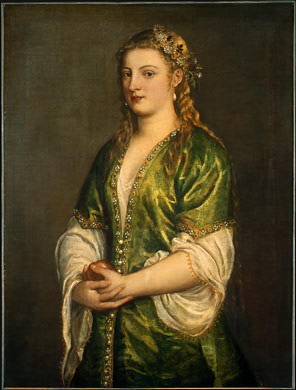
Throughout the fifteenth and sixteenth centuries, the Venetian and Ottoman empires were trading partners—a mutually beneficial relationship providing each with access to key ports and valuable goods. Though territorial wars intermittently interrupted their relationship, both empires relied on trade for their economic well-being. As a Venetian ambassador expressed, “being merchants, we cannot live without them.” The Ottomans sold wheat, spices, raw silk, cotton, and ash (for glass making) to the Venetians, while Venice provided the Ottomans with finished goods such as soap, paper, and textiles. The same ships that transported these everyday goods and raw materials also carried luxury objects such as carpets, inlaid metalwork, illustrated manuscripts, and glass. Wealthy Ottomans and Venetians alike collected the exotic goods of their trading partner and the art [and clothing] of their empires came to influence one another. (Met Museum, “Venice and the Ottomans”)
For my Turkish Venetian gown I chose a silk brocade and used a very sheer silk for the chemise. The result?
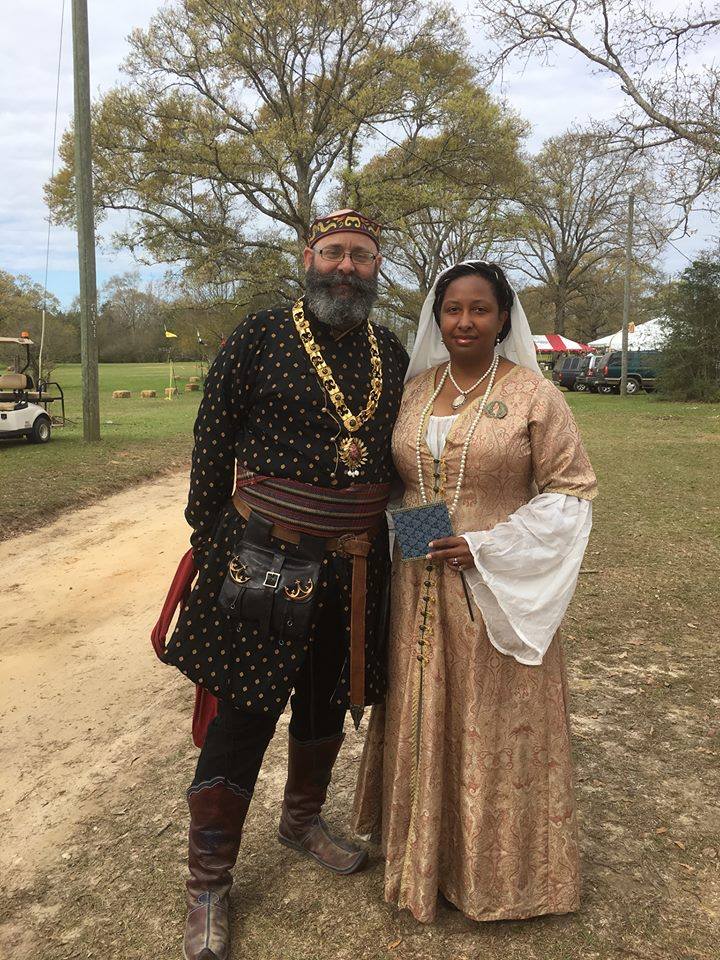
The coat was likely worn as seen above inside the home as a type of dressing gown.
It could have been worn alone outside the home as depicted in this find of a #TurkishVenetian crossover dress painting from the late #16thCentury that has two ladies in public with this dress on. I found this at the Doge’s Palace museum in Venice! It is the “Coronation of Baldwin of Flanders as Latin Emperor of Constantinople” by Antonio Vassilacchi. Very happy about noticing the main one in blue and then another possible one on the upper balcony in a reddish brown. #VenetianTurkish #labelladonnahistory #palazzoducale
It could also be worn over a dress for excursions outside, as the Venetian woman below is doing (notice the ‘v’ pointed sleeves of the coat):

RESOURCES
Aenor de Pessac (AKA Bekah) of the SCA Kingdom of An Tir has provided a few amazing resources for those who want to make this dress:
Her PDF instructions part 1 – Aenor de Pessac – Turkish Italian Gown Sew-Along First Class Deck
More PDF instructions part 2 – Turkish Italian Sew-Along Part 2
Paintings that give us more details on this coat can be found on Mistress Oonagh’s geocities page and are also listed below.
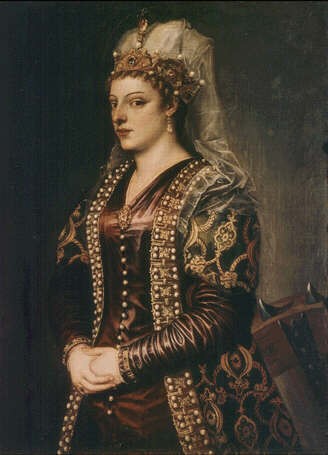
Titian. Portrait of Caterina Coronaro as St Catherine of Alexandria, 1542
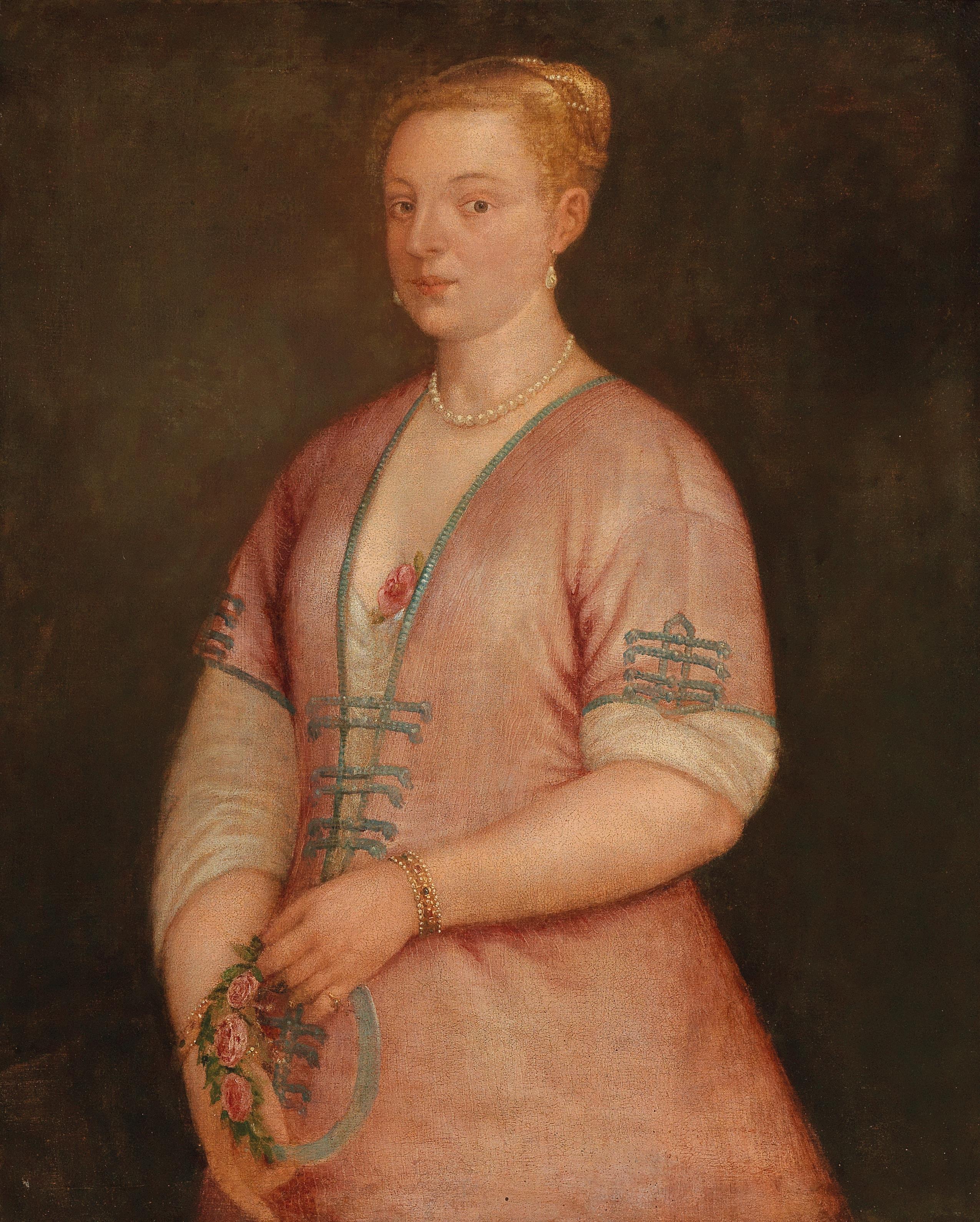
Pieve di Cadoro, mid 16th-century
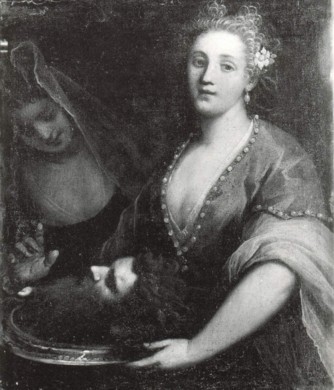
Palma Giovane. Salome with the Head of John the Baptist, unknown date.
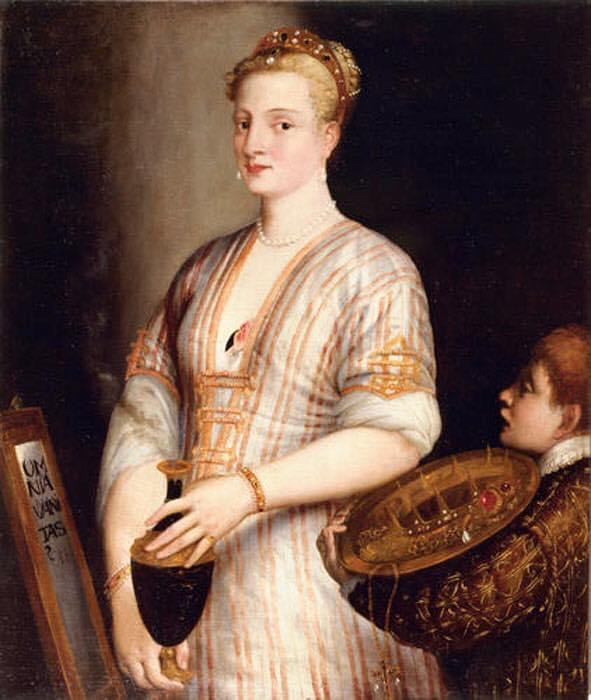
Allegoria della Vanità by Sacchis Giovanni Antonio de’ detto Pordenone.
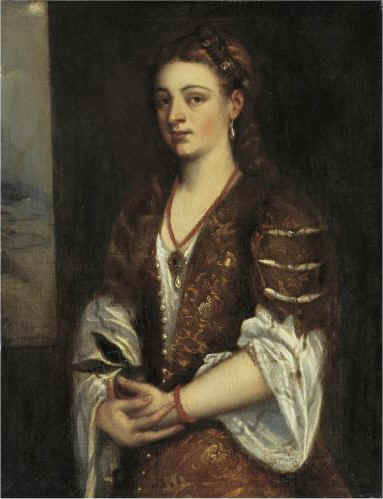
Studio of Titian. Young Woman Holding an Apple, unknown date.
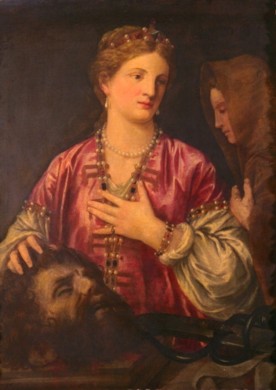
Uknown. Salome, unknown date.

Titian. Cameria, daughter of Suleiman the Magnificent as St. Catherine. unknown date.
Mistress Oonagh’s comments on the garment:
The sleeve shape: The sleeves are all truncated and have a point that falls to the front of the arm with a raised section to the centre position of the sleeve. This would led me to suspect that the point is reflected in the back of the sleeve also. The necklines. Each have a smooth V neckline with a Embellishments. Heavy embellishment at the opening of the neckline and the sleeve opening. Bejewelled pieces along with beads that could be pearls or of glass are used to show off.
Finished length. As each of the Venetian portraits are truncated at the thigh we can only speculate on the actual finished length. If compared with the Turkish images it is reasonable to reason on the length being to the ankle, but not to the floor.
Note the flag fan in the image below, also seen in Venice at the time. Additionally the magnificent colours of the textiles. The coats in these images have no evidence of pleating displayed, all would appear to get the fullness at the hem from the cut of the coat rather than the gather of extra fabric. The upturned skirt of one from the colour plate as well as the turn back on another would suggest a lining of a different fabric and finished edges with another textile, possibly bias strip. Finished lengths all appear to be ankle length.
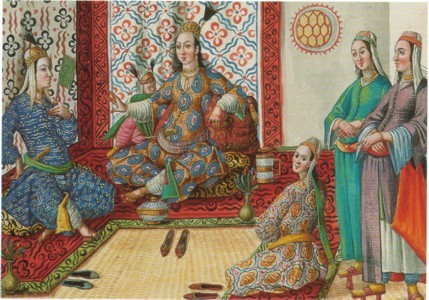
Harem, codex Vindobonensis 1590 Osterreichische Nationalbibliothek Vienna
More Paintings
SOURCES
I used research from others who have made this gown and is available via their blog posts:
Her Excellency Aenor de Pessac






















Any idea if anyone is producing a pattern of this? I am not skilled enough to make my own.
Reconstructing History has an Ottoman coat pattern you can use.
There is also a “Turkish Robe” pattern in Alcega.